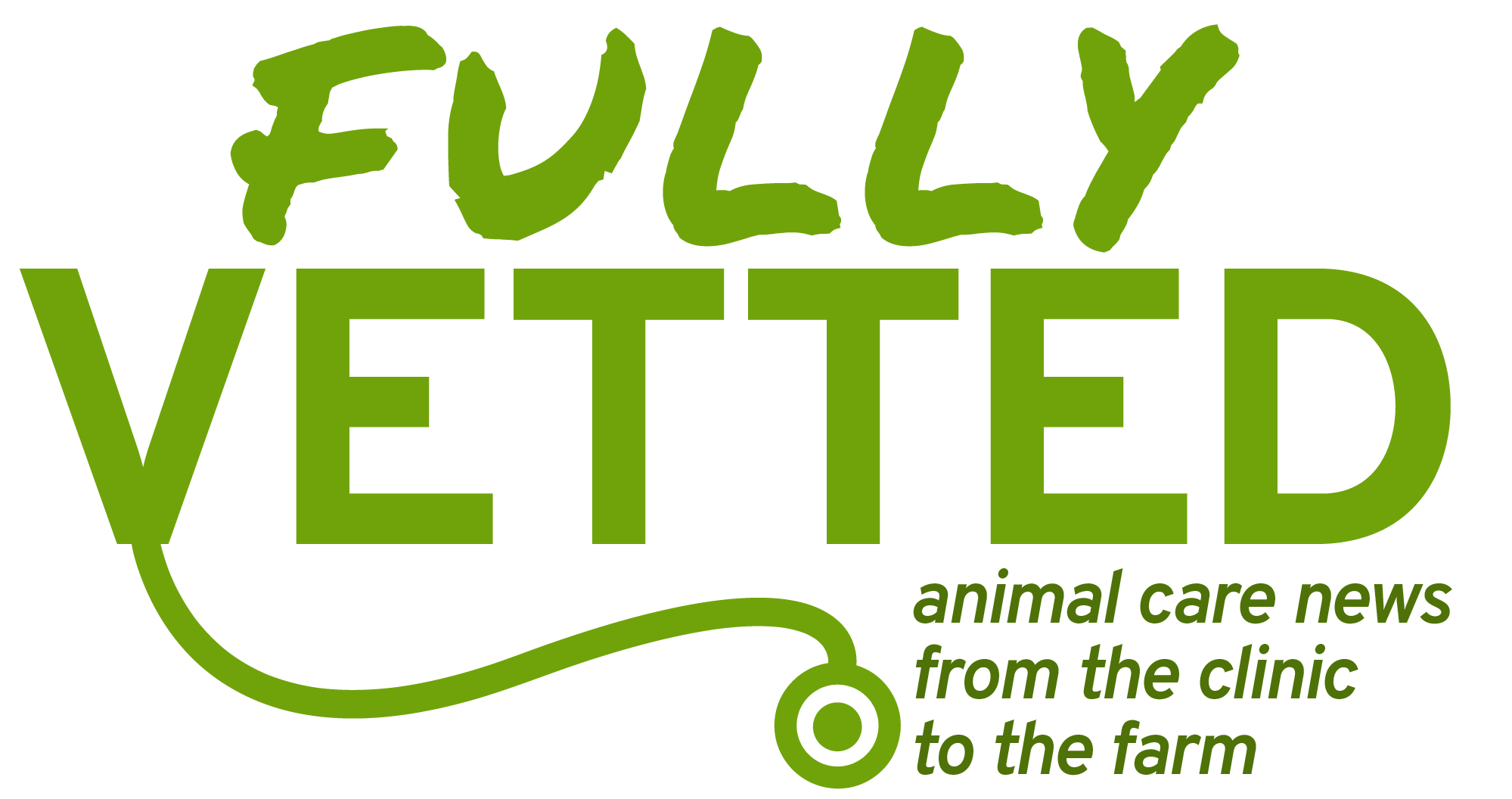
Episode 92
Right on the Money: Managing Your Costs to Boost Profitability
with Brad Marconyak
2024 MVC Preview Series See All Episodes »
Unless you have a money tree, you need to be strategic about your finances! But ensuring your practice offers high-quality care at a competitive price is a tricky balance. Further complicating the process is determining fair compensation for your staff to keep them happy—and employed. That’s not even accounting for all the other expenses related to running a business! Money management is a never-ending juggling act.
In this episode, we continue our 2024 Midwest Veterinary Conference Preview Series with Brad Marconyak, practice coach and strategic consultant with 35+ years of experience in the profession. He joins us to share a preview of his practice management sessions, including a sneak peek at a new strategy for pricing products and services.
Episode Guest

Brad Marconyak
CVT, CVPM
A 35-year veteran of the profession, Brad is a practice coach and strategic consultant who loves sharing his experiences and knowledge to further enhance medical care and growth for each practice. | Learn More »
Featuring 325+ hours of live and on-demand CE in 25 tracks, 100+ expert speakers, and nearly 200 exhibitors, the 2024 Midwest Veterinary Conference is packed full of opportunities to learn and engage. Registration is now open!
Transcript
Mia Cunningham: Today I will be chatting with Brad Marconyak. Brad is a highly respected CVT and CVPM and is slated to speak at the 2024 Midwest February Conference. He’ll be facilitating a series of sessions on practice management, and we are very happy to have him here. Good morning and thanks for joining me, Brad.
Brad Marconyak: Good morning. I really appreciate it. Thanks for having me here.
MC: Absolutely. So before we kind of dive into your sessions, I would love to hear a bit about your background and your journey in the profession.
BM: Well, keeping it short… My background. I’ve been in the veterinary profession for well over 30 years. I’ve been doing a little bit of everything. I grew up in the profession since I was 18 years old, so I took the journey a lot of people have, all the way from kennel staff and practice management. Then I become a consultant. So all that’s been a lot of fun. Where I ended up is, I had some friends ask me to help them open a hospital, and so I kind of fell into the role and it became a large referral practice. That was kind of great. And from there we moved on and I’ve been consulting for two over 20 years now. I’ve worked with hundreds of practices and kind of talk about labor efficiencies, pricing strategies and various challenges actually right now that are going on with inflation and things like that. So my goal with all of that is, is honestly to make people happy, take care of their pets fairly and, you know, take care of the practice also.
MC: So you’ve got quite a history in the profession, and I think it makes a difference when, you know, you love what you do.
BM: Very much so.
MC: So I think you’ll be a wonderful addition to our roster this year. And so as I previously mentioned, you will be facilitating a series of discussions in the practice management track on Friday, February 23rd. And I was looking over your descriptions and it seems like the overall theme is the cost of doing business and you cover everything from staffing expenses to effective pricing strategies. However, you’ve narrowed those things down to six very helpful topics. If you wouldn’t mind kind of giving our listeners an overview of those sessions?
BM: So, yes, not a problem at all. The first the first session is kind of… obviously these are morphing very much live as things have been changing so rapidly the last year or two years or three years, especially post COVID. But the first class is kind of understanding our labor costs and kind of efficiencies in the practice. Many people just kind of think, here’s my salary, here’s my price, what are we doing? We see various challenges in the profession of, are you a doctor-centric practice? You know, are your doctors doing more than they should be doing, or are you using your technical staff to their fullest capabilities? Do you want to use your technical staff to your capabilities? There’s various practices out there that have various different workflow, and that’s fine. There’s clients enough for everybody. We all know this right now. So the trick is to truly understand your staffing costs, your labor efficiencies and how they relate to what you need to do in your practice. And the overall theme for me is kind of making sure your practice is healthy, fair ,and profitable, but also fair to your clients and staff and your pricing. You can’t have a happy, healthy practice if you’re not profitable. So profit’s not really a bad word and that all starts with your labor.
Then we go on and we look at what’s routinely forgotten, which is your equipment. Most people have a direct inventory cost associated with their equipment and they do some sort of formula markup or percent markup or double or triple it and hope that covers your labor costs. We’ll actually take a deeper dive into the equipment costs and help people understand the true cost of actually having a piece of equipment or potentially wanting to get a new piece of equipment, helping associates understand that you have to use your equipment to get value out of it. Many times it’s just, buy me this piece of equipment, and we actually see that a little bit more with some of these consolidators now who, they won’t buy the equipment or they won’t talk about it when you own the practice, because it’s an expense. When a consolidator comes in, all of a sudden it’s like, now buy me all the toys because it’s no longer their expense. So we kind of see that and help analyze that and let practices know your equipment is a revenue stream and show you how to make sure you account for everything associated with your equipment, even the items or contracts or supplies that are not directly billed to the client. So all of that. We’ll discuss making equipment your revenue stream.
And that that leads to the next session, which is kind of like understanding the basics of how we price our services. You know, how are people doing it now? You have the magic eight ball method, you have the inventory markup method, there’s percent methods, there’s call around methods, there’s benchmark methods. We find out, we take a look, and we’ll briefly touch on some of those, but we’ll kind of try to understand what’s happening in your practices specifically and kind of dive into what’s going to generate the basics of pricing in your practice. What I do is kind of very unique as far as the strategic pricing that most people haven’t seen. It really dives into the heart of the practice. One thing we see now is the Bureau of Labor Statistics has updated the staffing costs for assistants, which average $40,000 and credential technicians up to $52,000. So salaries are on the rise. Personally, I actually see some of that higher, along with doctor salaries, which have grown astronomically since COVID, along with benefits and things like that, and with the doctor shortages everybody hears about and knows about, doctors are getting paid more. The question is, how do we how do we pay them or where does that come from?
MC: Now, are you seeing that on a national scale, or is that just in South Carolina where you’re from?
BM: Correct, I’m in South Carolina, but I consult across the country.
MC: Okay. So you’re seeing these numbers nationally.
BM: Well, the labor statistics I got from a DVM360 article. But veterinary salaries in general, they’re so variable. The challenge with veterinary salaries is somebody is always paying more now. There’s definitely a shortage of veterinarians or veterinarian working hours across the country. So with those costs going up and new graduates are getting paid a lot more than they have historically. How do we account for that? So we need to get the basics of, how do we price our services? And then account for all that. And each one of my sessions is going to build on the last for that reason. So once we get the basics of prices, we’ll kind of review the benchmarking, kind of look at a little differences and what you do look at power pricing to make sure we’re going where we need to go. You know, we’ll try to help people understand the fear that veterinarians have to increase their price and help kind of take some of that away by looking at the true costs versus just this is what we feel it should be.
And that kind of leads into a lateral topic next: Inventory pricing. It’s pretty straightforward, the inventory model: You buy something for X and sell it for Y. And to kind of help with an example, we talk about lab pricing. People say, Well, my clip from my lab profile cost me $35. I need to charge $70, and that’ll pay for it. Well, we’ll actually dive into that and graduate from that model because that’s not entirely true. There are so many variables that clinics have now with their lab pricing, along with the big variables in their staffing costs. They are not the same as they used to be. So we’ll dive into that along with people and these contracts. Now, for labs, they have inherent back-end costs and nobody talks about—quality, controls, things like that that they have to run, or storage for radiographs, things like that. So we’ll talk about how some of those inventory cores kind of graduate from the inventory model to truly identify what’s happening in our practice and get an appropriate strategy.
And that leads into the last two topics, which to me are the bread and butter of the veterinary profession. And so what we look at is what is the true cost of our veterinary services. We’ve so long taken to the account of either the inventory model or we think this is what it cost or yes, we’re profitable, so it’s okay. But what we’ll do is we’ll take everything we’ve just talked about and we’ll build on our labor costs, our inventory costs, our equipment costs, and we’ll find out the true service costs. What does it truly cost your practice? And then we can look at what is our true profitability expectations, depending on where you’re at or if you belong to some of these groups out there. Profitability ranges on kind of the gold standard is 20%, but we’ll see. Some practices, that is now half. They’re happy at 15%. Some of them want to go higher at 25%, but there has to be some form of profitability to allow you to reinvest in your practice, in your staff and for the risk that owners take. So how do we get a fair price? How do we get a scientific, strategic, non-magic pricing? So we’ll kind of wrap all that into a nice little bow and take a look at it and I’ll bring some real examples of all of these situations so that you can kind of see how this all gets wrapped together and tied in. But also what we want to do is take a step back and look specifically at individual practices, because they’re all different. We have good guidelines and goals. So a nice, nice bow.
And then for me as a practice manager, more valuable than anything is getting my staff buy in so that I can get client buy it. So we put all this together. We can educate the staff first so that they understand why we’re pricing what we are. Too many staff feel that their clinic prices are too expensive, maybe because they can’t afford them, or associates feel that they can do services for low cost or no cost because they either have a good heart or they don’t realize the value. But we kind of take that and show them this is what it costs to do a service. This is why you need the price, what you need to do, or we can’t be here to help anybody. This is fair. This isn’t the practice trying to take the money for all it’s worth. This is us trying to provide a good service to our community and our clients. We put all that together, get our staff to buy it. And when we get our staff buy it, it becomes easier to get client buy in. So your staff truly understands their worth and their pricing. So we take a step back and therefore then we get into helping the clients understand that work.
MC: So it sounds like there’s like a lot of like critical takeaways that people can use almost immediately by attending your sessions.
BM: Very, very much so. The main points of contention that you’ll take away is the first one is truly understanding your costs and what goes into it. That’s number one. So you can go back to your practice. You can say this is what it costs, this is where I’m at, and then what do I want to do? So you can kind of you have a a steps you can use.
And some of what we’ll be talking about may take a little bit of time. But in the in the short term, but in the long term, it becomes a lot easier and simplify things. So the takeaways you can get when you understand your labor costs, you understand the true value of your labor. And we’re not just talking salaries. We’re going to help you look at what are your true cost of your of your staff. Many people are payroll companies and they’ll do a lot of this for you. We take their costs. So obviously, if you’re looking to buy new equipment or upgrade equipment or sign your contract, you take that back, you look at your reality of are you going to be profitable?
Many times I see people buy equipment because it’s cool, but they never use it. It’s a paperweight set in the corner. Like your home gym that’s a furniture and clothes rack, you know, kind of fits in those same things. So you kind of put all that together and we get this body. What you take back to your practice over the after the whole session is an open, honest, fair appreciation for the costs and a fair approach to how you can price things for your clients as well as your clinic. So it’s a win-win-win for the whole profession.
MC: Well, talk to me a little bit about your presentation style. So is it primarily lecture or are there any elements that are interactive? What can people expect when they come down and sit down in your session?
BM: That’s a good question. Well, one, I’m animated, so I talk with my hands. I walk around, I’ll ask questions. But more often than not, with some of the questions, I want some answers so that we can truly see how things are individualized, but more It’s kind of an open discussion. I’m not one to preach. I’m more like to have discussions. I’ll probably do most of the talking. But when they come in, my goal is to have a dialog to help people understand and educate and learn. And I’ll be learning things from these people as well as we talk. That’s always a good sign as well.
MC: If any of our listeners would like to follow up with you or learn more about you and your work, do you have like a social media presence or an email address that you like to share?
BM: You can email me at [email protected]. I am on LinkedIn, but I’m not a big social media person, so I’m not on Facebook, I’m not on Instagram. So I would say email me would be the best way. Or you can reach me on LinkedIn.
MC: We will make sure to include that in the show notes for people to reference. Thank you so much for being here with me today.
BM: I very much appreciate your time. I’m very excited to kind of share insights and learn from everybody else. This will be a great time, so thank you.
MC: Absolutely.
